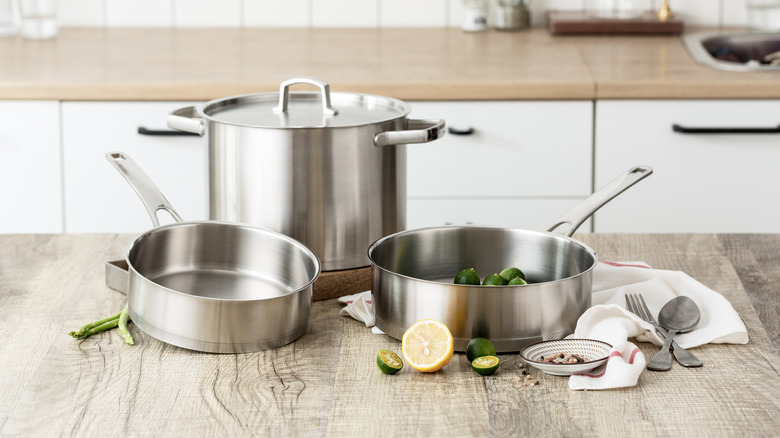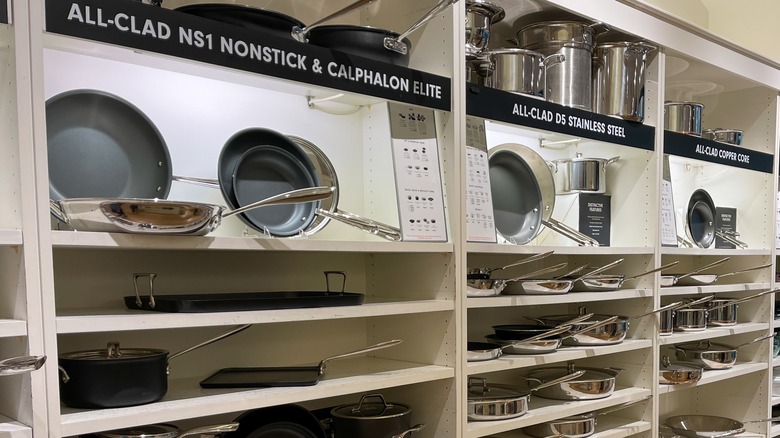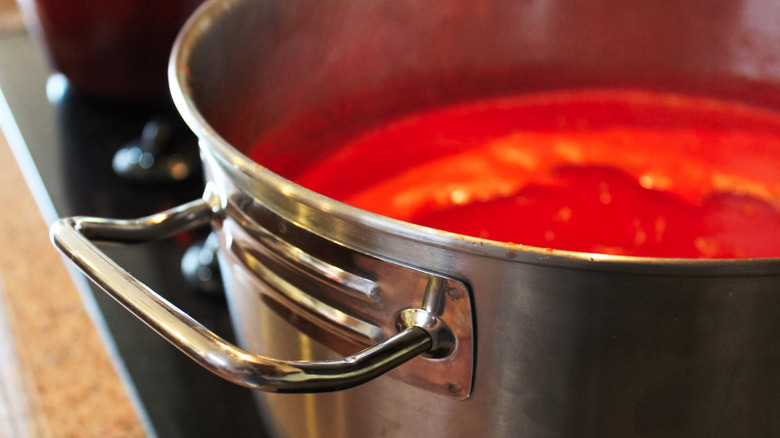What Is Fully Clad Cookware And Why Should You Use It?
You may have noticed some pots and pans seem to last forever; no matter how much you use and abuse them, they endure, while others end up tarnished and warped after one ride in the dishwasher or a spin or two on the stovetop.
High-quality cookware will last a lifetime and is worth investing in if you enjoy cooking. Contrary to popular belief, you really only need a few cookware pieces and not that whole, expensive set. Think of your favorite dishes you make most often to clue you into which pieces you should invest in (via Real Simple).
Once you've decided which cookery you want to dedicate some cabinet space to, it's time to weed through all the Amazon results you received for "saucepan." There are a variety of options you'll come across, but by adding a simple keyword to that search bar you can narrow down your search to the best options, ensuring your saucepan will be taking up real estate in your kitchen for a while. That keyword is fully clad. But what exactly is fully clad cookware and why does it fit the bill of being one of the best?
It's like a steel sandwich
Clad is another word for dressed, covered, or attired ... and that's exactly how you can think of it when it comes to pots and pans. Fully clad cookware consists of layers of materials clad together. Stacked sheets of metal, three or more, are bonded together and formed into the shape of a pan. You'll find the same thickness throughout the pan — from sides to bottom — indicating even layers of all metals. You will not see a round plate or disc on the bottom (via America's Test Kitchen).
All-Clad is arguably the most popular and revered brand of fully clad cookware, but metallurgist John Ulam founded the company by accident. He simply enjoyed cooking and wanted a better pan. So, he applied his metal-making knowledge and skills and made just that. Bonded metal pans were born and have been available to the public since 1971.
The metals Ulam used for his new, fully clad cookware were layers of stainless steel surrounding a layer of aluminum as the core sheet. Today, copper is used as a core as well. Why did Ulam choose this particular steel sandwich on the menu?
Fully clad is the best of both worlds
Slipping an aluminum or copper sheet between layers of stainless steel offers the best of both worlds. Stainless steel is a dependable and enduring metal. It doesn't corrode (hence its qualifying first name), is easy to clean and can go in the dishwasher, and doesn't react with acidic foods. However, it is not the best at conducting heat, which is pretty important when it comes to cooking.
Aluminum and copper are both very good conductors of heat, with copper coming in at an excellent level resulting in higher pot price points. However, neither are as durable as stainless steel and don't hold up well over time. Aluminum will tarnish and warp as well as affect the taste of some acidic foods, and possibly leach (think simmering tomato sauce with a hint of metal on the palate). And if you've ever seen an old penny, you know what happens to copper with time (via Insider).
Enveloping a great conductor of heat between trusty old stainless steel offers even, uniform heat from all sides of the pot or pan. Pots that have only an aluminum bottom will heat too quickly resulting in a blackened bum (via Lupilon).
Fully clad cookware is versatile and low-maintenance and will give your recipe its best result. Although more expensive, the pieces will last for decades. But if you break down that price point by the number of uses you'll get, you might find that this difference comes down to, well ... pennies.


